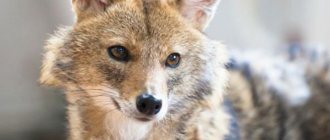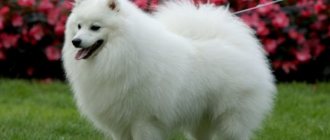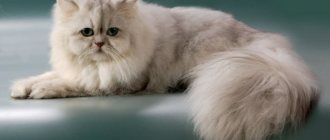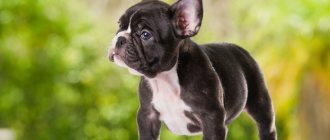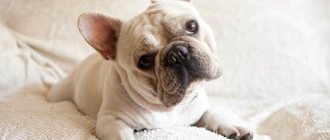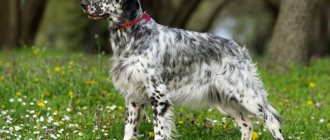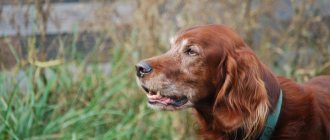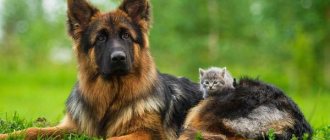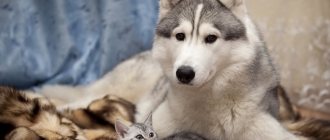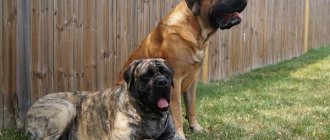In Soviet times, rabbit breeding in our country was quite well developed; the USSR was even one of the largest producers of rabbit meat and rabbit skins. However, the economic collapse of the 1990s hit this livestock sector perhaps harder than any other. The vast majority of large farms were destroyed, and the gene pool was preserved only through the efforts of enthusiasts in small and medium-sized farms. In the 21st century, there was a turning point and the industry began to revive again. Many novice rabbit breeders are interested in the Flanders giant rabbit breed. But are they really that good?
History of the breed
The Belgian giant comes from Flanders, the northern region of Belgium, otherwise called Flemish. It can be considered one of the oldest species, since it is known that the first rabbits of outstanding size were bred in the 16th century near the city of Ghent.
It is believed that the Flanders descended from the largest individuals of Old Flemish blood, which were bred in ancient times and have not survived at the moment. Perhaps the blood of Patagonian rabbits brought from Argentina was added to their pedigree.
There is an even more amazing version that these are the descendants of ancient stone hares, which were large in size and lived in caves. Although now it is difficult to understand how they crossed with domesticated animals. Be that as it may, breeding work was carried out for three whole centuries, and in the 19th century rumors leaked from Belgium about this robust one.
It is known for certain that the first record of a Flemish-type rabbit was recorded only in 1860. The owner of such outstanding external data, beautiful fur and a large amount of meat could not go unnoticed. However, little attention was paid to him at first.
The first standards for the breed were written in 1893, after the Flemish Giant was exported to England and then to America. It was crossed with other breeds and new species were obtained; branches from the Flanders began. He began appearing at exhibitions in 1910.
Flanders rabbit
In 1915, the National Federation of Flemish Rabbit Breeders was organized, which continues to promote the breed to this day. It was also brought to the territory of the former Soviet Union, but it did not take root due to the harsh climate, but it served to develop the domestic gray giant breed.
How did Flanders appear?
Historical documents did not record the algorithm of action of the breeders of that time. The source material was local individuals. According to some information, only the selection of large parents was carried out over many generations. According to others, the local Flemish rabbit was crossed with someone else. One version mentions the wild Argentine Patagonian rabbit, which later became extinct in its homeland. I will not list other versions. They all have the right to exist, but only as versions and cannot give us anything definite at the present time.
Just for the sake of clarification, I will add that all breeds of rabbits are man-made and belong to the family - the common rabbit or the European wild rabbit. Therefore, if we look even further back into centuries, we can say with confidence: the distant ancestors of Flanders are wild European rabbits. But history is generally silent about the path they took to become local savages (the immediate ancestors of domesticated individuals). Perhaps none, or perhaps people somehow participated in the preliminary improvement through selection for the tribe.
There IS also an alternative name for the mentioned region of Belgium. Flanders is also called the Flemish region. Hence the second popular name of the Flanders breed - Flemish rabbits. But the most popular and accurate name for this group of animals is the Belgian giant breed. This is the name that appears in documents describing rabbit standards.
Initially, Flanders rabbits represented a group of animals of small numbers, limited to the region. In size, they clearly did not reach the current representatives of the Belgians. Their weight did not exceed 5 kg. Currently, this is the largest and one of the most popular breeds in the world. Some Flandres reach fantastic sizes, more than 20 kg, for which they are awarded places in books of records and awards at major international exhibitions. Now every self-respecting country, in terms of industrial rabbit breeding, considers it necessary to have its own large breed, not inferior to Flanders in size. And many succeeded, to a greater or lesser extent.
Description and characteristics of the breed
The Flanders rabbit is a powerful representative of his world, perhaps he can be called the largest of all domestic rabbits. Flemish giants are known for their obedience and patience, so they are happily bred as pets.
It’s not for nothing that they are also called “gentle giants” and “versatile bunnies.” They can be used for a wide variety of purposes - as a pet, for participation in various shows, for breeding, and as a fur and meat animal.
These heroes are distinguished by their large mass and some “awkwardness” in their figure. The “baby” weighs from 6 to 10 kg, some specimens grow up to 12 kg. In Britain, a record weight of 25 kg was recorded. The body is elongated. The back is straight, but sometimes arched. The neck is short and looks “recessed” into the body.
Large ears look like burdock leaves. The head is large, with fairly plump cheeks and a wide nose. The mustache is small and not very noticeable. The eyes are dark in color, slightly recessed. The animal's chest measures from 35 to 45 cm in girth, which is a large indicator.
The paws are thick and strong, the front ones are short, the hind legs are of medium length. The tail is long and curled. An important condition for the breed is the color of the claws. They should be the same shade as the fur. The standard fur color is white, sand, sandy brown, dark gray and black.
The size of the Flanders breed is impressive
Recently, silver, ash, red-sand, blue and even orange specimens have appeared. The fur is dense, soft and thick to the touch. The length of the hairs is up to 3.5 cm. Flandre in the photo looks as prescribed by the standard - good-natured and flexible. Its “fluffiness” adds a pleasant “homeliness” to the appearance.
Because of its sociability, affection and friendliness, rabbits are often purchased as a pet, instead of a dog or cat. He is trusting of his owner, smart, obedient, and loves to play with children. In addition, it is not dangerous for a giant to be in a house with other animals. He inspires respect with his size.
Belgian Giant breed standard.
Printed publications with rabbit breed standards.
And yet, I cannot just “bury” this wonderful breed in my mind; I insist on observing the breed standard for the true local Flanders, the indigenous Belgian or Flemish giant, which is listed in regional catalogs. No one has yet canceled them and they exist in parallel with the European Union in a number of countries. As for the previously mentioned reference book by L. Utkin, it also says that the agouti (gray-hare) coloring belongs to wild rabbits, Gray Giants and Flanders. For example, I will use the Swiss catalogue. It was published after the first editions of European standards, is freely available and describes rabbit breeds in great detail.
Common data.
The Belgian Giant (Flanders) is a large breed. It is Flandre that appears in the standard, and not Flander, as he is sometimes called in local dialects. Although this does not change the essence.
General form:
- Head: large, set close to the shoulders, rectangular, broad forehead, muzzle well developed.
- Ears: strong, set upright, well covered, length 18 to 19.5 cm.
- Neck: not pronounced.
- Chest: fully formed, wide.
- Shoulders: muscular, closed.
- Forelegs: medium length, straight, strong.
- Posture: medium height.
- Back: elongated, wide, well formed.
- Pelvis: closed, well placed, round in shape, medium height.
- Hind legs: strong, parallel.
- Belly line: high, clearly defined.
- Fur: dense, thick, coarse, with a large amount of undercoat, abundant cover and hair.
- Hair length: 33-37 mm.
- Skin: soft, tight-fitting.
A VERY CHARACTERISTIC feature of the Flanders is the shape of their ears. In addition to the fact that they are very large, they also have an extension in the middle part, which makes them look like the scoop of a spoon. This sign is not typical for other large rabbits.
Color and shine:
There are homozygous: gray and heterozygous - iron-gray.
How, you ask, why are two different coat colors allowed? After all, it was just said that the breed should be monocolored. We can only state that the admitted two-color is the result of a certain consensus of breeders of past centuries. This is how it happened historically. At a certain stage, further work to filter out the color of the “savages” was considered inappropriate. Obviously, it was not possible to achieve our plans. But the fact that agouti rabbits with a homozygous set of genes were not included in the standard already speaks volumes. It was they who could bring down all the work done, return the entire livestock to the starting point.
I will immediately note that although homozygous and heterozygous Flanders are not difficult to distinguish, both of these colors are quite similar in perception and can change throughout the life of even one rabbit. In addition, darkening or lightening is clearly visible on different parts of the body. If you examine a rabbit's hair under magnification, it does not look the same; the color of the hair is distributed in three annular zones that have different shades and lightness. Each is responsible for its own pair of genes, plus several others, which distribute these zones according to the width and thickness of the hair. This fact is taken into account in the standard, which allows certain liberties for color and subcolor. In general, the former have a predominantly gray bias, while the latter tend to be agouti. Often the color agouti is simply referred to as grey. But the authors of the catalog, still taking into account some deviations in one direction or another, identified it as iron-gray. In fact, the Flanders breed standard allows for significant deviations from gray or iron gray in certain areas of the body.
Gray cast iron (without agouti inclusions):
- The base color may change to moderately blackish on top, provided there are brown flecks.
- The edge of the ears and the parietal region are black.
- The wedge on the forehead is small and rust-colored. The belly and tail below are light.
- The inside changes slightly towards increasing brownish spotting. The iris of the eyes is brown.
- Claws of dark horn colors.
- Subcolor: The undercolor is about two-thirds of the hair and is colored blue, after which the black color begins.
Iron gray (with agouti flecks):
- The general color is brown, with more or less black endings of guard hairs and coarse hairs. Thanks to this, the body casts a dark shade. Depending on the direction of stroking, it takes on a lighter or darker shade. It should be balanced and cast as much as possible on the stomach and inner limbs.
- The color of the chest and dewlap is slightly lighter than the color of the body. The neck has a rusty brown wedge that defines its appearance. The edge of the ears is blackish, like the withers on top, but they have spotting.
- A sign of agouti is also a lightened area around the eyes, jaw, and its extension. The belly color is white with a bluish tint.
- The spots on the lower back are brown. Preference is considered when in the front part of the body, white color is not visible.
- The iris of the eyes is brown.
- Nails in dark horn colors.
- Subcolor: at the base the color is light, then it becomes more and more blue, and finally turns into brown. This is followed by a pale black ring, becoming bright at the end of the hair.
Signs of breed quality
Purebred Flanders must meet the following requirements:
- The ears are wide, erect, pubescent, with a black border along the upper edge, size from 17 to 25 cm;
- The cheeks are large and thick;
- The chest is voluminous and wide in width;
- The body reaches 90 cm in length;
- The weight of an eight-month-old rabbit is from 6 to 7 kg;
There is no rejection based on color; any color accepted by the standard is welcome.
The following are considered inferiority:
- Small body weight of rabbits, small individuals are discarded;
- Insufficient weight gain as you get older;
- Non-standard head size and non-compliance with proportions are considered defective;
- Ear length less than 17 cm;
- Tendency to aggression, inflexibility of the animal.
How to choose a Flanders rabbit
The rabbit is selected from a 2-3 year old female rabbit - this age is considered optimal for reproducing high-quality offspring.
Important! The baby must be fed with mother's milk for at least 2 months, after which it is considered strong enough to live independently. Such children are capable of becoming good producers.
Basic Rules
When choosing rabbits for the household, you can follow these tips:
- a large number of children in a litter is a sign of fertility;
- The rabbit should be of average age (2–3 years);
- babies and their mother must be clean and well-groomed;
- Sticking and darkening of fur on the paws is not allowed.
Signs of purebredness
Typical “pure” representatives of the species have the following qualities:
- pubescent wide erect ears up to 17–25 cm long with a black border on the upper edge;
- large chubby cheeks;
- wide chest with sufficient depth;
- body length - up to 90 cm;
- weight at the age of 8 months is about 6–7 kg.
- The color can be very diverse - from white to black, so culling is not carried out based on color.
Signs of breed marriage
Pedigree marriage is quite rare, since this species is almost ideal for breeding.
Important! The character of the animals is also decisive in the breed standard - real Flanders are aristocratically calm and friendly.
But deviations from the standard still occur:
- short body length - small rabbits in a large breed are simply discarded;
- underweight at the developmental age;
- disproportionate head size - too large or small;
- short ears - up to 17 cm;
- aggressive behavior, lack of flexibility.
Kinds
As already mentioned, the Flemish breed gave impetus to the creation of many large breeds of rabbits. They have the common collective name "giants", but the place of birth varies. In addition to the Belgian giant, the following breeds are known:
- White giant. Typical albino with red eyes. Also developed in Belgium at the beginning of the 20th century. The breeders selected among the Flanders only animals with white skins and recorded the result. Similar work was carried out in Germany. They are distinguished by thin, strong bones, elegant constitution and tender, tasty meat.
- Vienna Blue Giant. Also a descendant of the Belgian giant, it has a different intensity of bluish-blue coat color. He has a strong physique, is fertile and in good health. Resistant to low temperatures. Selected at the end of the 19th century in Austria.
- German giant (Riesen breed). Obtained in Germany at the end of the 19th - beginning of the 20th century. It has several types of color - gray, blue, black, yellow, gold. It differs from the Belgian in faster weight gain, but late puberty. In addition, they are more likely to have health problems.
- Gray giant or Poltava giant. Bred in the mid-20th century by Ukrainian livestock specialist A.I. Kaplevsky. He has large dimensions, long ears and a good-natured disposition, inherited from the Belgian. It differs from its ancestor in having a lighter blue-gray coat, only a straight back (remember, in a Flandrean it can be “arched”), a lower quality skin, the “Poltava” gains weight faster and has shorter legs.
- Silver giant. The body is large but compact. Brought out in the former USSR near Tula and in the Poltava region. Now it is being reproduced in Tatarstan. The quality of the cover is second only to the famous chinchilla and the black-brown breed.
In addition, there is a variety of “rabbit-ram”, named after the shape of the skull. It includes many subspecies - French, German, English, Meissen. These pets weigh 5-8 kg, have the same docile nature, long ears and thick fur. The non-standard structure of the ears has led to the fact that they hear worse and are therefore less fearful.
How to determine if an animal is purebred
The Flemish giants have a longer body compared to other breeds, which is how they got their name. In addition to its large size, the purity of the breed can be determined by other distinctive characteristics:
- many individuals have a straight back, while some pets have a slightly concave back;
- animals have dense, erect ears, reaching a length of 25 cm;
- The animals have short fur - only 4 cm in length;
- Rabbits' paws are proportional in size relative to the body;
- claws in color match the color of the fur;
- A distinctive feature of the breed is the presence of a fold in the chin area.
Pros and cons of the breed
The positive properties of the breed include:
- Unpretentiousness in food.
- Good fertility.
- Abundant feeding of newborn rabbits - females have a lot of milk, which is considered to be of excellent quality.
- Good survival rate of rabbits.
- Rapid growth of babies.
- Flexible character.
- Resistance to diseases and climate changes.
The weight of the Flanders breed reaches 10 kg
Negative qualities:
- Quite late puberty.
- The meat yield is 55-60%. Although, given the size of the Flanders rabbit , the amount is quite large. A medium-sized individual has about 4 kg of pure meat. The larger the rabbit, the more useful product.
- Congenital curvature of the limbs. It happens that a rabbit gives birth to babies with underdeveloped and crooked legs.
- Average quality of skins. A lot of fluff with a high concentration of guard hairs. In addition, the cover may be uneven.
- Gluttony and constant feeling of hunger.
- High price of “purebreds”.
Features of keeping flanders.
The peculiarities of growing Flanders, of course, are associated with their huge, by rabbit standards, size. Unlike medium-sized breeds and hybrids, they need spacious cages and queen cells, as well as cages for young animals. Otherwise, the development process will be weakly dynamic, and the life of rabbits as a whole will be overshadowed by diseases and depression of the general condition, including due to gas pollution and lack of oxygen. For breeding males, the required minimum overall size is 110x70x50 cm, for females with a brood, taking into account the nesting site - 170x110x50 cm.
Lattice or mesh floors are permissible only in cages for growing young animals no more than 2-2.5 months old. For all other Flanders, it is necessary to construct solid floors, and for breeding rabbits and all individuals exceeding the weight of 5 kg, soft bedding in the form of a layer of hay or other material is required. This is due to the large load on the soles of the rabbit's feet, especially the hind ones. We know that rabbits' paws were originally adapted to moving on grass and do not have a sufficient margin of safety to constantly remain on the net. If broiler rabbits somehow manage and do not have time to develop blood corns in their short life, then giants often suffer from them.
TREATMENT OF PODODERMATITIS is a rather lengthy and expensive process that does not always lead to the desired result. Therefore, owners of large rabbits need to pay great attention to prevention. Treatment should begin as soon as possible when the first signs of skin cracking appear.
In addition to ensuring a soft floor, you need to monitor the length of the claws and shorten them in time. Overgrown claws redistribute the load to the back of the sole, especially on hard floors, where they cannot be depressed. This greatly increases the likelihood of defeat. Treatment should begin as soon as possible when the first signs of skin cracking appear.
Care and maintenance
First you need to decide on the habitat of the rabbits. To locate the cage, choose a warm and dry place, without drafts. The cage should be large, to match the pets. Dimensions are at least 170x80x60 cm. If there is a rabbit with children in the cage, then even larger - 170x110x60 cm.
An increased cage size is necessary to protect the offspring from heavy trampling by the mother. It is necessary to provide the cages with drinking bowls and feeders. The drinking bowl should always be filled, especially for a nursing rabbit. There have been cases where, due to lack of water, the female ate the babies.
It is necessary to clean the premises regularly; rabbits are very clean animals. Adult rabbits are fed two to three times a day in an enclosure protected from wind and direct sunlight. Natural materials are used as flooring - wood, dry bedding made of hay. No artificial materials or meshes. This can lead to illness and injury to the animal.
The breed is unpretentious in keeping and tolerates almost all weather conditions, except severe frosts. A little advice - provide lighting and heating to the cages; on short winter days they lack light and warmth.
At approximately 45 days of age, rabbits are vaccinated against myxomatosis (an infectious disease with high fever, the formation of tumor lumps, swelling on the head and complex inflammation of the eyes). At the same time, a vaccine against hemorrhagic disease is given.
Sometimes a complex vaccination is given - 2 injections every 15 days. But all procedures are prescribed and under the guidance of a veterinarian. If you notice lethargy, apathy, any growths, itching or unexpected bald spots on the animal’s body, go to the clinic immediately.
Content recommendations
Experienced rabbit breeders note that caring for animals of this breed is quite difficult, as they are demanding in terms of living conditions. Flemish giants are heat-loving animals, so in some countries where the temperature on the thermometer drops below −10 ℃ in winter, they are kept in warm rooms. If you leave Flanders outside or in an unheated shed in cold weather, there is a high probability that they will catch a cold and even die.
Due to their large size, such rabbits need spacious cages. The optimal dimensions for a single dwelling are 110×70×50 cm, and for a female rabbit with young animals – 170×110×50 cm.
From the following video you can glean useful information about some features of feeding and care:
Representatives of the breed are distinguished by good resistance to various infectious diseases. However, this does not mean that animal cages can be cleaned less frequently than usual. Flemish rabbits, no less than their other counterparts, need to maintain cleanliness and order that meet standard sanitary requirements.
As for nutrition, there is one very important point to remember. It is advisable to add biomycin to the food of giants . Otherwise, the owner risks losing his pets, since they quite often die from bloating.
Furry giants should be fed not only with dry grass (fresh hay must be poured into the cage daily), but also with grain and various “wet mixtures.” They should include mixed feed and various crushed vegetables: boiled potatoes, pumpkin, cabbage, carrots, fodder beets. You can add salt to the mash, but in very moderate quantities. Fortified meat and bone meal is also sometimes included in the Flanders diet, and medications are also administered (if necessary). Giants, like any other animal, must always have access to fresh drinking water.
The daily diet of rabbits should include hay and fresh vegetables.
Nutrition
The main feeding feature of Flanders is their insatiability. They are not picky eaters, but they will need a lot of food. In the morning they are given succulent feed and some concentrates (50-60 g), at lunch - fresh grass or dry hay, in the evening they can be given silage and again 50-60 g of concentrates. They need to be fed at the same time.
Fresh herbs are first slightly dried in the sun. New foods are introduced into the diet gradually. It is not allowed to give dirty root vegetables to an ornamental animal. First you need to thoroughly wash the product and grind it. Barley and cake are also crushed, and legumes are soaked for 3-4 hours.
Check feed for freshness, never use moldy or rotting food. And do not feed tops of nightshades (tomatoes, eggplants, potatoes), as well as branches with foliage from stone fruit trees, elderberries and poisonous herbs. Do not use frozen foods. Here is one recipe for vegetable mash for flanders:
— Pumpkin or zucchini – 1 share;
— Boiled potatoes – 1 share;
— Fodder beet – 5 shares;
— Carrots – 1 share.
You can also add feed there. The grain mash is prepared from barley or wheat, oats - 2 parts each, and corn and cake - 1 part each. And again we remind you about water. For a large animal it is vital.
Disease resistance
Thanks to their strong immunity, Flanders are resistant to respiratory and viral diseases. To prevent the development of pathologies, preventive immunization is recommended.
It is mandatory to vaccinate pets against diseases such as pasteurellosis, myxomatosis, and viral hemorrhagic disease. Primary vaccination is carried out on rabbits at 1.5 months of age (in the spring) against myxomatosis. After 14 days, you should get a preventive vaccination against a viral hemorrhagic disease.
Vaccinations require a visit to a veterinary clinic. Before vaccinating, the doctor examines the animal to rule out primary signs of respiratory diseases. Sick pets are immunized after they have fully recovered.
Reproduction and lifespan
To start breeding Flanders rabbits , you need to know an important nuance. Compared to other breeds, Belgian giantesses mature late, no earlier than 8 months of age. But this is an additional factor for the birth and bearing of healthy offspring. Pregnancy lasts 25-28 days and is not difficult.
The birth is also easy, with a litter of at least 8 rabbits. Each weighs about 80-100 g. During the first weeks, the mother takes full charge of caring for the babies. She feeds them nutritious milk. Change the water more often, at least 3 times a day. After 3 weeks, the babies crawl out of the nest and try to taste food for adult rabbits.
The owner needs to remove the queen cell and disinfect the entire room. Growing cubs need to be examined every day. If you notice any complications, consult a doctor immediately. On average, rabbits live 5-6 years, but with good care the period can be increased to 8 years.
Breeding Flanders rabbits
There are no difficulties in breeding the breed - the females are fertile and highly milk-producing, so all the cubs will be fed. Moreover, female rabbits of this breed do not try to eat their babies. Pregnancy lasts up to 28 days and proceeds normally even with a large number of rabbits - usually there are 6-9 rabbits in a litter, but sometimes up to 12-15.
Farmers should avoid autumn births, as the animals' bodies are exhausted by molting during this period.
It will also be useful for you to know what to do if your rabbit's eyes are festering.
Principles of selection for reproduction
For breeding, you need to select two representatives that meet the breed standard. Considering the presence of a variety of colors in the standard, there is no special control over any “correct” color - meat indicators are more important.
The health of an animal is passed on to its offspring, so purebred representatives of the breed are used for selection or breeding of strong individuals. Rejected rabbits should not be used for breeding, even with each other.
Pregnancy and childbirth
Flanders reach maturity quite late - at the age of 8–9 months. The female rabbit comes into heat every 5–7 days in the summer and every 7–9 days in the winter. During this period, she needs to be placed in a cage or enclosure with a male. Mating is the same as with other rabbits.
The pregnant female is protected from extraneous noise, she is well fed and given clean water. After 4 weeks, the rabbits are born.
During the first litter, the female can bring a small number of babies. This is not at all a reason to reject it - these are the characteristics of the species. The next litters will be much larger.
Caring for baby rabbits
The expectant mother needs a spacious cage, good food and clean, dry bedding. The rabbit will do the rest herself - give birth and feed the babies.
The farmer only needs to monitor the correct weight gain of newborns:
| Rabbit age, month | Weight, kg |
| 1 | 0,7 |
| 2 | 1,5 |
| 3 | 2,5 |
| 4 | 3,5 |
| 5 | 4,5 |
| 6 | 5,5 |
| 7 | 7 |
If the rabbits are raised for production, they should stay near their mother for two months. Babies that are being prepared for slaughter must be separated from the female rabbit when they reach the age of 1.5 months. Children must be examined daily, and if pathologies are detected, immediately contact a veterinarian.
Feeding the young
During the first three weeks after birth, little Flanders feed on their mother's milk. Then they begin to leave the nest and try “adult” food. It is worth making sure that babies initially receive soft and juicy food 3 times a day. After several days (5–7) of getting used to the food, you can give more complex formulations and vitamins.
Vaccination
The first vaccination against major diseases, as mentioned above, is carried out for rabbits aged 1.5 months. If the baby looks healthy and happy, vaccinations should be postponed for a month and a half.
As is the case with humans, veterinarians do not agree on the need for preventive vaccinations. Proper care and good living conditions are the best disease prevention.
The Flanders rabbit breed is interesting in many aspects - it is a calm pet, a large meat breed with a good yield of quality product, and a household favorite. There will definitely not be a dull moment with these rabbits – neither when keeping them nor when breeding them.
Price and reviews
The price of a Flanders rabbit is considered rather high. For a three-month-old rabbit you can pay from 800 to 1200 rubles. It is better to purchase animals from reliable breeders on proven rabbit farms. Then you will be confident in both the purity and good health of your pets.
Before purchasing, ask experienced owners about breeding features and look at reviews on the Internet. For example, on the review site you can read the following comments:
- Lipetsk resident Olga: “I started breeding the breed 3 years ago, before that it was unfamiliar to me. I bought rabbits and did not regret it. Unpretentious large breed. Minimum time spent. Females are good mothers. All the rabbits are alive...”
- Rostov-on-Don, Emil: “I became the happy owner of a dark gray Flanders rabbit. I didn’t even expect such a good character from the rabbit. Smart, obedient and big, just a dream..."
- Snezhnoye, Ukraine, Igor: “I’ve been trying to breed Flanders rabbits for about 3 years. There are a lot of rabbits, but they take a long time to mature. Large, repaired the cage more than once. They eat a lot. But otherwise, it’s a good and calm breed...”
Who messed everything up and why?
Why did it happen? Are rabbit breeders really so careless and entangled in their own shackles? I think we need to look for someone who benefits from such confusion. You guessed right, of course, to the sellers. It’s a great marketing ploy to add a well-promoted brand to other names. German Risen (Flanders) not only sounds great, but also increases the number of potential buyers. Business tycoons took advantage of our illiteracy and carelessness caused by the lack of wide access to catalogs where the names and standards of breeds are clearly stated. These documents can only be seen at exhibitions and on large farms. More than once I tried to find the necessary information via the Internet, but only lost time. There are only some outdated versions. In addition, these documents are valid only in the territory of the state where the catalog was published. In the CIS countries, they are not a decree and can be interpreted very loosely or completely ignored. In our open spaces, perhaps, one can learn something from the remaining Soviet authoritative publications. For example, from the directory for 1986, edited by L.G. Utkin. You will say that it is outdated, and you will be wrong, the main breeds that exist now are reflected in it.
Productivity
This meat-haired breed is quite productive. A monthly increase of 1 kg is provided by individuals starting from 3 months. They reach 6-10 kg by the age of one year. Reproduction is not so intense.
Mating begins at 8-9 months; female rabbits are not very fertile . 6-12 cubs are the result of a litter. The Flanders rabbit is gaining weight quickly. Particular growth intensity is observed up to 8 months, after which many are sent for slaughter.
The fur is not characterized by any special quality.
Varieties and colors of Flanders
At the moment, there are many branches and varieties of the breed, but all its representatives are characterized by specific characteristics.
The officially recognized coat color standards for Flanders rabbits are:
- grey;
- white;
- silver;
- sand;
- faun (sandy red);
- opal;
- blue;
- agouti (gray-orange);
- kangaroo (dark gray);
- black.
Flanders blue.
The color of rabbits should be uniform, without spots.
How to choose a baby rabbit?
If you decide to purchase rabbits, it is best to do this on a large farm where professionals breed breeding animals. Having decided on the appearance and color, you need to consider the following recommendations:
- choose rabbits born by a 2-3-year-old female and fed with mother's milk for a long time;
- do not purchase an animal that is less than 2 months old, otherwise you risk getting an insufficiently strong baby;
- Pay attention to the build, bite, condition of the coat and general activity of the little rabbit.
Can I keep it in an apartment?
Flanders are, first of all, cute and friendly little animals. Therefore, it is not at all surprising that some people keep them as pets and keep them in their apartments. Their maintenance is no different from the maintenance of decorative rabbits. The only thing is that the cage in this case will need to be larger. Other conditions for care, cleaning and feeding remain the same.
The rabbit will not be able to sit in a cage all the time , so he needs to organize a walking area. In the summer, a balcony or loggia is perfect for this. The flooring in the apartment should be made from natural materials. Laminate, linoleum or plastic can cause the animal to develop pododermatitis. If pathological manifestations occur, you should immediately contact a veterinarian.
If desired, the cage can be replaced with a basket similar to a dog bed.
04:04
Mating of female rabbit NZK with FLANDR //Life in the village!!!
02:34
A girl hugs a giant rabbit that lives in her house. This video took the world by storm!
Okrol
In order to get large and healthy offspring, experienced farmers plan the litter in advance. Despite the fact that offspring can appear at any time of the year, it is believed that breeding offspring are best bred in summer, winter or spring. In the autumn season, meat animals are bred.
A few hours before giving birth, the female begins to build a nest from hay and her down. Therefore, until this moment, the owner must clean and disinfect the cage, fill it with dry hay and water.
Most often, the birth of babies begins at night or early in the morning. Lasts from 10 to 30 minutes. After birth, the female eats her afterbirth, licks the newborn rabbits and carries them to the nest. The number of rabbits can vary from 7 to 15.

